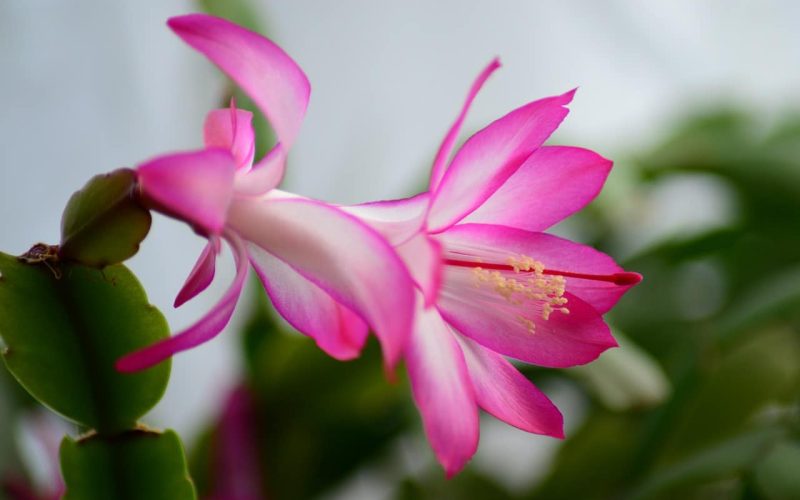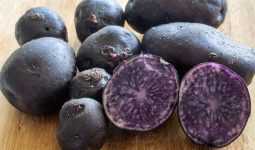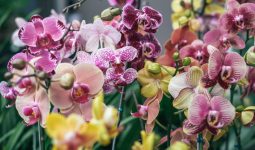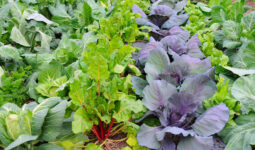Drought tolerant plants are plants that tend to need less water and care. They are usually found in regions with drought-like conditions.
This article will examine drought tolerant plants in Texas. Texas is a region where drought-like conditions are common.
This drought-like condition is characterized by little to no precipitation leading to a water shortage.
It is no secret that water shortage influences the growth of plants. Water has often been regarded as the “lifeblood of plants.” Hence, the impact of drought can be devastating to plants.
This creates the need to minimize the impact of drought by cultivating drought tolerant plants and incorporating various water management strategies.
This does not mean that drought tolerant plants need no water. The truth is they do require substantially less water than many other choices.
You can cultivate nice-looking drought tolerant plants without resorting to one full of cacti and succulents.
Some very lovely plants offer aesthetics but don’t use much water. It behooves us then to identify such plants.
Some characteristics of drought tolerant plants are:
- The need for less water than non-native plants from other parts of the world.
- They require less maintenance. This saves time maintaining and replacing plants when they die.
- Drought tolerant plants also attract pollinators like butterflies and bees, which are beneficial insects.
There are plenty of drought tolerant plants in Texas that not only survive but thrive in the Texas sun. Read on as we examine them!
Drought Tolerant Plants in Texas
1. Esperanza
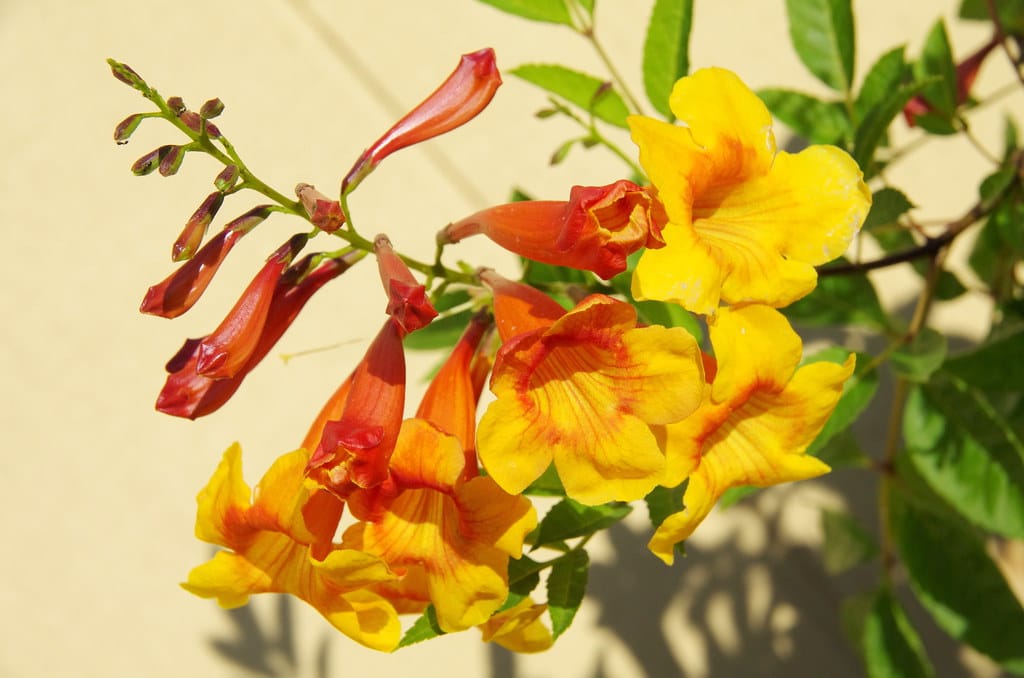
Esperanza is one of the drought tolerant plants in Texas. The plant has beautiful yellow flowers and bright green leaves.
Esperanza is commonly known as Yellow Bells because of its flowers, but it has other names such as; Gold Star, Yellow Trumpet Flower, and Yellow Elder.
These names account for its glamorous color and ornamental prowess in beautifying the landscape.
The plant is native to Texas but can also be found in New Mexico and Arizona. Esperanza can grow up to 4- 6 ft in height.
One characteristic of this plant is its hardiness and durability to survive under hostile conditions.
Because drought tolerant, it blooms its best when grown in drier conditions and takes the Texas heat well.
It strives in the sunshine. It does well in filtered light too. But, when it’s too shady, the plant can look slightly leggy with fewer blooms.
Esperanza can also tolerate a wide range of soil conditions as long as the soil does not retain too much moisture.
A well-draining soil is ideal. Here, a Well draining soil means that water should drain away in about 3-5 hours, a reasonable amount of time after irrigating or rainfall.
The plant does not do well in winter but can survive once it has roots. When the winter is over and the heat returns, Esperanza will return.
It is also easy to maintain this plant as no significant pests or diseases bother it. With a little pruning and occasional water in intense periods of drought, the plant does well for itself.
2. Texas Lantana
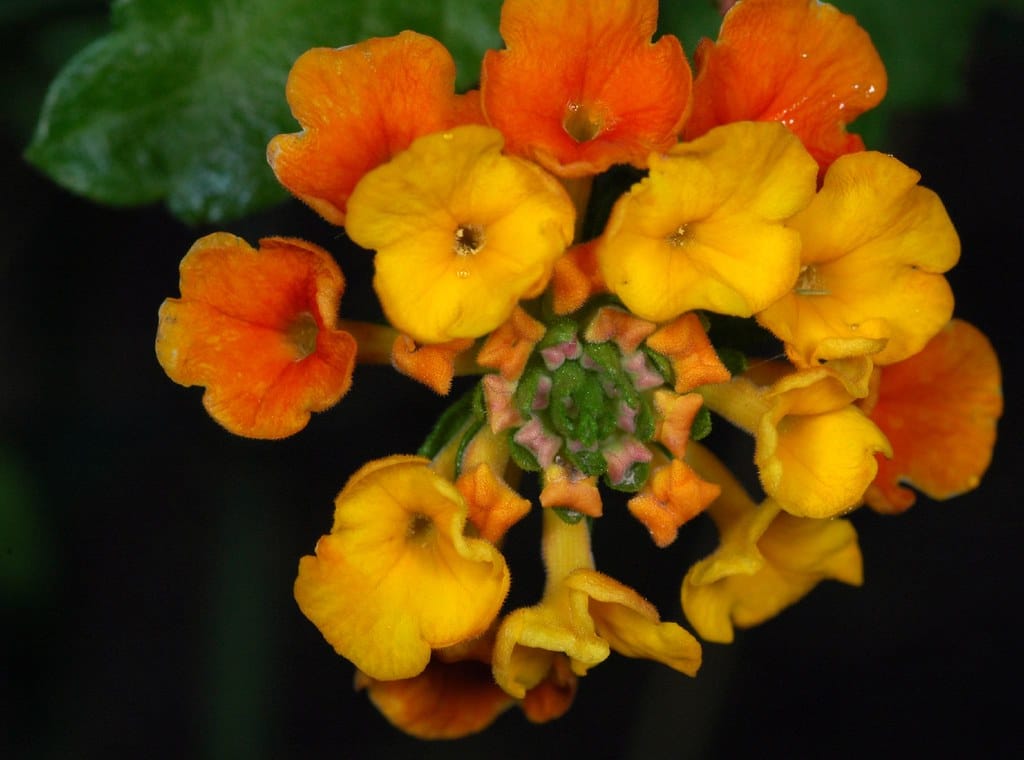
Texas Lantana is among the drought tolerant plants in Texas. Just as its name suggests, this plant is native to Texas. Note that Texas lantana is just a variety of the lantana plant.
The Lantana plant itself comes in a wide variety of colors. Some of these varieties are not native to Texas and hence can become invasive when cultivated.
Texas lantana can bloom throughout the growing season. Just like Esperanza, it prefers well-draining soil and full or partial sunlight.
This plant is a low, spreading shrub with rough and aromatic leaves. It has yellow and orange flowers, attracting birds and butterflies with their nectar.
The round bloom clusters start as yellow and then turn orange and red.
The colors make this plant a great choice for the Texas landscape as it adds beauty. The plant grows 2-3 ft tall.
3. Dwarf Yaupon Holly
Dwarf yaupon holly is a variety of the holly plant that is drought and heat tolerant.
This variety of yaupon holly is slow-growing and grows up to around 3 feet in height and width. Nevertheless, it can also grow up to 5 feet or more.
Because of its slow growth and penchant for being small for many years, it earned the “dwarf” moniker. It can tolerate a wide range of soil.
It tolerates salt, too, and performs best in acid to slightly alkaline soil ranging from 5.5-7.5 PH.
Although full sunlight is a booster for this plant, dwarf yaupon holly needs deep roots to tolerate drought very well.
So, for the first 3 months of cultivating it, water it occasionally to promote deep roots that will withstand dryness.
Once the roots are established, they can be very drought tolerant. The plant also does well in full or partial sun.
Dwarf yaupon holly has dark green foliage, which turns light green in the springtime and produces black or red berries.
The plant also makes a nice formal hedge and great ground cover.
It is also easy to maintain and can even be left or trimmed to grow into a naturally mounded shape in a more casual setting.
4. Flame Acanthus
Flame Acanthus is native to Texas and is one of the toughest and easiest plants to grow because it can handle lots of exposure to the sun and strive under little care.
It is hardy and has modest water requirements, making it an ideal choice for drought tolerant Texas plants.
Flame Acanthus gets its name from the deep reddish-orange facing tubular blooms.
These flowers bloom when the ground is dry and the weather is very hot from mid-summer to fall.
Because the hummingbirds enjoy this plant’s nectar, it is also commonly called Hummingbird Bush.
Other names for this plant are; Texas Firecracker Plant, Wright’s Desert Honeysuckle, and Wright Acanthus.
It grows up to 3-5 ft tall under full or partial sun in well-drained soil. Because of their hardy nature, they can also survive in sites with poor soils and reflected heat.
5. Red Yucca
Red Yucca is a yucca-like evergreen perennial plant native to the Chihuahuan desert in southwestern Texas.
As a result of its desert origin, red yucca is one of the drought tolerant plants in Texas.
The plant has a wispy, grass-like appearance with colorful flowers or structured, tree-like forms reminiscent of tropical flora.
The Leaves are thicker than those of a typical yucca but more sword-shaped than aloe vera.
These leaves are also spineless and have fibrous threads along their edges that can grow up to 2-3 ft long.
Reminiscent of its name, red yucca is known for its bright red flowers.
Red yucca blooms through spring to late summer, and the base stays evergreen after the flower spikes fade. The plant is low maintenance as its desert origin hardens it.
It can survive on a wide range of well-drained soil and does not require irrigation. It grows well in the sun but can also survive in partial shade.
6. Autumn Sage
Also among the drought tolerant plants in Texas is Autumn Sage.
The plant is native to Texas and grows up to 2-3 ft tall and flowers continuously from late spring until hard frost.
The plant has pale green leaves, while the flowers come in many shades, including red, white, and pink.
Considering that the plant requires minimal care with its ability to tolerate heat and drought, autumn sage will bloom long between March and November and even during dry weather.
The plant will strive beautifully under full or partial sun. It requires water twice a week until it is established.
Once it has taken root, it requires minimal watering. Hummingbirds and butterflies are attracted to the plant because of its nectar.
7. Abelia
Abelia is among the drought tolerant plants in Texas. Although native to Japan west to the Himalayas and Mexico, the plant survives just fine in Texas because it is tough and strives in dry heat.
Abelia is a tough and beautiful plant. It features clusters of white, bell-shaped flowers.
The buds are pink, open to five-lobed pinkish-white flowers, and extremely fragrant. They bloom continuously from early summer to fall.
This beautiful flowering shrub can grow in full sun to partial shade and is tolerant of most soil types.
Due to its compact shape, and solid and sturdy nature, it will stay put, even during windy conditions, and is often used as a hedge shrub or foundational planting.
8. Texas Sage
Texas sage, just as its moniker suggests, is native to Texas. The leaves are evergreen and silvery with purple flowers.
The color of the flowers here accounts for why it is commonly called Purple Sage.
Another nickname for Texas sage is “Barometer Bush” because the plant begins to bloom as soon as the humidity rises after dry weather.
Texas sage may take up to 2 years to fully establish and bloom because it is a slow-growing plant.
An ironic factor about this plant is that it blooms well after a good rainstorm but won’t bloom when watered heavily.
It is a low-maintenance plant that does well under full sun or partial shade and can grow 4-6 ft tall.
Texas sage blooms intensely the older it gets, beautifying the landscape and a shelter for bees, butterflies, and hummingbirds.
9. Nandina
Nandina is also one of the drought tolerant plants in Texas known for its year-round foliage.
Because of its aesthetics, the plant is widely used as an ornamental choice for plant beds and landscapes in Texas.
Some common names for nandina are heavenly bamboo and sacred bamboo because each shrub has numerous narrow stems that resemble bamboo, even though it is not bamboo.
The leaves of this plant are durable and tough and can grow up to 4-8 ft high and 2-5 ft wide.
Nandina also serves as ground cover or foreground plants. This drought tolerant plant comes in various varieties like burgundy wine, blush pink, obsession, and firepower.
The plant requires minimal maintenance and survives well under full sun or partial shade in well-drained soil.
Despite their ability to beautify the landscape and their drought tolerant appeal, they are considered invasive species in Texas, and the berries produced by the plant are quite toxic to pets and birds.
10. Bougainvillea
Bougainvillea plants are hardy tropical plants that thrive in hot, dry climates. The plant is thorny and evergreen.
It produces off-colored leaves that look like flowers in various colors- yellow, crimson, orange, or white.
These bright, colorful leaves that bloom and look like flowers are not flowers at all.
They have modified leaves called “bracts.” The bougainvillea flowers are tiny, white, and shaped like a trumpet.
These beautiful flowers and bracts of the bougainvillea plant contrast sharply with the green and yellow leaves that comprise most of the plant. Together, the plant has a unique look that beautifies the landscape.
A bougainvillea plant is tough and would grow in almost any dry soil with a slightly acidic content under full sun or partial shade.
The plant likes climbing. Hence it is ideal to allow plenty of room to spread and grow.
Plant bougainvillea next to a fence or supply a trellis or other support if cultivated in the garden.




